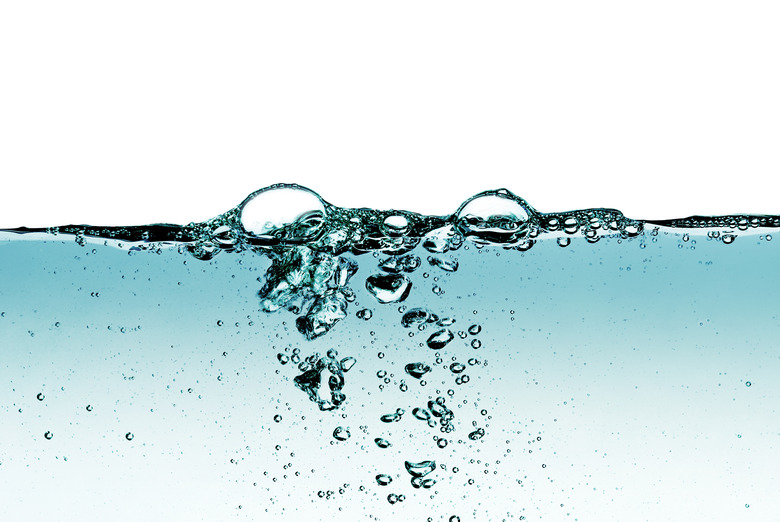Why Is Hot Water Less Dense Than Cold Water?
Hot and cold water are both liquid forms of H2O, but they have different densities due to the effect of heat on water molecules. Although the density difference is slight, it has a significant impact on natural phenomena such as ocean currents, where warm currents tend to rise above cold ones.
Water Density
Water Density
Cold water is always more dense than warm water; the density change amounts to about 4 tenths of one percent between near-freezing and 30 degrees Celsius (86 degrees Fahrenheit). Although small, the difference allows warm water to "float" on top of cold water, a phenomenon that occurs every day in the world's oceans.
Warm Water Density
Warm Water Density
The reason warm water is less dense than cold water is the heat itself. When heat is introduced to water (from a source like the Sun), its molecules are excited by the energy. They begin moving faster, so when they bump into one another, they bounce further away. The increased space between the fast-moving molecules decreases the density.
Cold Water Density
Cold Water Density
Cold water has greater density than hot because its water molecules are more sluggish; vibrations and movements are slower and less energetic. The molecules bounce and jostle each other less, so more can fit together in a smaller space. Because they are packed together more tightly, the water's density is greater.
Convection of Water
Convection of Water
Because warm water is less dense, when warm and cold meet, warm water rises to the top; scientists call this "convection." This process sometimes creates a cycle in which water at the surface of a lake is heated during the day, then cools and sinks at night, creating a slow, continual circulation from the depths to the surface and back again.
Ocean Currents
Ocean Currents
Masses of warm water rise above cold water in the world's oceans. Given currents, warm, tropical water is shuttled toward the poles in a motion like a conveyor belt, with cold waters underneath. The divide in temperatures is called the thermoclime. The Gulf Stream is an example of this phenomenon, and this cycle of bringing warm tropical water up also affects climate over large geographic areas. London, for instance, is not as cold as Calgary, even though it is the same latitude, because it benefits from the Gulf Stream. Ocean water does not always move this peacefully, though. Sometimes, when hot and cold water (and air masses) meet, the result is a storm or even a hurricane.
References
Cite This Article
MLA
Mann, Terry. "Why Is Hot Water Less Dense Than Cold Water?" sciencing.com, https://www.sciencing.com/hot-less-dense-cold-water-6326030/. 13 March 2018.
APA
Mann, Terry. (2018, March 13). Why Is Hot Water Less Dense Than Cold Water?. sciencing.com. Retrieved from https://www.sciencing.com/hot-less-dense-cold-water-6326030/
Chicago
Mann, Terry. Why Is Hot Water Less Dense Than Cold Water? last modified March 24, 2022. https://www.sciencing.com/hot-less-dense-cold-water-6326030/
